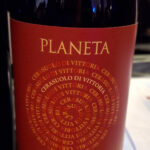Italy:
The Country and its Wine
 Italy is one of the top producing wine countries in the world, and Italian wines are highly regarded as classics. Roman viticulture that begun in Italy influenced the world of wine we know today.
Italy is one of the top producing wine countries in the world, and Italian wines are highly regarded as classics. Roman viticulture that begun in Italy influenced the world of wine we know today.
Italy’s soils are characteristic of its diverse topography. Northern regions like Piedmont and Veneto feature clay and calcareous marl (an earthy mixture of fine-grain materials). Central regions have galestro soils–crumbly, flaky, medium-grained clay particulate. Campania and Sicily feature volcanic soils, which are some of my favorites. And coastal sandy soil helps add freshness to whites.
Let’s look at Italy’s wine regions, grape varieties, vintages, history, and some Italian wine that I’ve tried myself.
🌐 Italian Wine Regions
🗺️ Major Italian Wine Regions
- Piedmont is known for its Nebbiolo-based wines, including Barolo and Barbaresco, as well as Barbera and Dolcetto. The region also produces notable sparkling wines like Asti and elegant whites like Gavi.
- Tuscany is famous for Sangiovese-based wines like Chianti, Brunello di Montalcino, and Vino Nobile di Montepulciano.
- Super Tuscans, blending traditional and international grapes, also hail from this region.
- Veneto is home to Amarone della Valpolicella, Prosecco, and Soave, offering a diverse range of reds, sparkling wines, and whites. The region is one of Italy’s largest producers by volume.
- Sicily is known for Nero d’Avola and Marsala, as well as emerging modern wines made from indigenous grapes like Grillo and Frappato. The volcanic soils around Mount Etna produce distinct and high-quality wines.
🗺️ Additional Italian Wine Regions
- Puglia (Apulia) specializes in Primitivo and Negroamaro, producing rich, full-bodied reds. It is one of Italy’s most prolific wine regions.
- Lombardy is celebrated for Franciacorta, a high-quality sparkling wine made in the traditional method. The Valtellina subregion also produces Nebbiolo-based reds.
- Emilia-Romagna is synonymous with Lambrusco, a sparkling red wine ranging from dry to sweet.
- Trentino-Alto Adige is a northern region producing aromatic whites like Pinot Grigio and Gewürztraminer and fresh reds like Lagrein.
- Campania is famous for whites like Fiano and Greco di Tufo, as well as Aglianico-based reds such as Taurasi.
- This region contains Mount Vesuvius, which lends fascinating volcanic soil, as well as Pompeii, which contains an ancient-style vineyard within the ruins.
- Friuli-Venezia Giulia produces white wines, including Friulano and Sauvignon Blanc. The region is also known for its orange wines and light-bodied reds like Schioppettino.
- Abruzzo is known for Montepulciano d’Abruzzo, a bold and fruity red, and Trebbiano d’Abruzzo, a crisp white.
🗺️ Lesser-Known Italian Wine Regions
- Sardinia is famous for its Cannonau (Grenache) and Vermentino wines. The island’s unique terroir produces distinct and expressive wines.
- Umbria is renowned for Sagrantino di Montefalco, a powerful red wine. Orvieto, a white wine blend, is also a regional specialty.
- Lazio is known for Frascati, a refreshing white wine made primarily from Malvasia.
- Marche produces Verdicchio, a crisp white wine with great aging potential. Rosso Conero and Rosso Piceno are the region’s notable reds.
- Liguria is a small coastal region known for Pigato and Vermentino, two aromatic white wines. The Cinque Terre area also produces rare, distinctive wines.
- Calabria is best known for Gaglioppo-based reds like Cirò and white wines made from Greco. Its wines are influenced by the region’s hot, dry climate.
- Molise is one of Italy’s smallest wine regions, focusing on Montepulciano and Tintilia grapes. Its wines are often rustic and food-friendly.
- Basilicata is home to Aglianico del Vulture, a structured red wine grown on volcanic soils. It’s a lesser-known but highly regarded wine region.
- Valle d’Aosta is Italy’s smallest region, producing high-altitude wines from grapes like Petit Rouge and Fumin. Its wines reflect the Alpine terroir.
🍾 Common Grapes in Italy
Get ready–there are plenty.
🍇 Major Italian Grapes
- Sangiovese: Italy’s most planted grape, known for its bright acidity and red fruit flavors, forming the backbone of Chianti and Brunello di Montalcino.
- Nebbiolo: A highly tannic, aromatic grape responsible for Barolo and Barbaresco wines, primarily grown in Piedmont.
- Barbera: A versatile red grape with bright acidity and cherry notes, widely planted in Piedmont and beyond.
- Montepulciano: Found in central and southern Italy, it creates full-bodied, approachable reds like Montepulciano d’Abruzzo.
- Pinot Grigio: A popular white wine grape in northern Italy, particularly in Veneto and Alto Adige, offering crisp, light wines.
- Trebbiano: One of Italy’s most planted white varieties, often used for light table wines and in blending.
🍇 Native & Historic Italian Grapes
- Aglianico: An ancient grape producing bold, tannic reds like Taurasi, known as the “Barolo of the South.”
- Nero d’Avola: Sicily’s signature red grape, producing wines with rich, dark fruit flavors and robust structure.
- Verdicchio: An historic white grape from the Marche region, valued for its crisp, mineral-driven wines.
- Corvina: A key grape in Valpolicella and Amarone wines, known for its cherry and herbaceous notes.
- Primitivo: A cousin of Zinfandel and genetically identical, this grape thrives in Puglia and produces ripe, spicy wines.
- Moscato: Famous for sweet, aromatic wines like Moscato d’Asti, widely grown across Italy.
🍇 Unique Regional Grapes
- Fiano: A distinctive white grape from Campania, producing aromatic and textured wines.
- Arneis: A Piedmont white grape, known as “the little rascal” for its tricky cultivation, producing elegant, floral wines.
- Lagrein: Native to Alto Adige, this red grape offers dark, earthy wines with high acidity.
- Garganega: The main grape in Soave, a Veneto white wine with floral and citrus characteristics.
- Frappato: A Sicilian red grape often blended with Nero d’Avola, providing bright, fresh red fruit flavors.
🍇 Lesser-Known Italian Grapes
- Pecorino: A white grape from central Italy with crisp acidity and subtle herbal notes.
- Grillo: A key Sicilian white grape, used in both Marsala production and fresh, dry table wines.
- Dolcetto: A fruity, low-tannin red grape from Piedmont, offering easy-drinking dry wines.
- Vermentino: A Mediterranean white grape grown in Sardinia and Liguria, producing vibrant, saline wines.
- Teroldego: Native to Trentino, this red grape produces deeply colored, fruit-forward wines.
🍇 Rare & Unusual Italian Grapes
- Pignolo: An ancient Friulian red grape, recently revived, known for its tannic, long-aging wines.
- Schioppettino: A rare red grape from Friuli, offering peppery, aromatic wines.
- Cesanese: A historic red grape from Lazio, producing spicy, earthy wines with red fruit flavors.
- Timorasso: A rare white grape from Piedmont, offering complex, age-worthy wines.
- Sciacarello: A Corsican red grape (grown in some Italian regions), prized for its aromatic, light-bodied wines.
🍇 Blending Grapes
- Canaiolo: A traditional blending partner in Chianti, offering softness and fruit to complement Sangiovese.
- Malvasia: A family of aromatic grapes used for both dry and sweet wines, grown throughout Italy.
- Lambrusco: Known for its sparkling red wines, primarily from Emilia-Romagna.
🍇 Experimental Grapes
- Incrocio Manzoni: A hybrid white grape from Veneto, known for producing elegant, aromatic wines.
- Sagrantino: A bold, tannic red grape from Umbria, making long-lived wines like Sagrantino di Montefalco.
- Nascetta: A recently rediscovered white grape from Piedmont, offering aromatic and mineral-driven wines.
📅 Italian Wine Vintage Reports
I’m compiling these shortly–thanks for your patience!
📖 History of Wine in Italy
Italy has one of the oldest documented histories of wine cultivation in Europe, with traces of winemaking found on Monte Kronio in Sicily dating back to 4000 BCE. This is well before Greek and Phoenician settlers introduced their own viticulture around 1000-800 BCE. Early Italian winemakers cultivated wild Vitis vinifera.
By the time of the Romans, wine production had reached unprecedented heights. In the 2nd century BCE, massive vineyards were planted, and Italy was far and away the dominant wine producer of the ancient world. Roman innovations spearheaded vast irrigation systems, efficient production methods, and more, all of which spread across Europe.
By 92 CE, there were so many vineyards in Italy that Emperor Domitian decreed some needed to be destroyed so fertile areas could be used to grow food instead.
During the Middle Ages, Italian city-states and monasteries helped sustain viticulture, as wine was integral to trade, religion, and culture overall. However, the spread of wine culture across Europe led to much more intense competition from Gaul (France) and other regions.
In 1963, Italy established its first wine classification system, with the familiar categories like DOC and DOCG. These categories were refined and updated in 1992 and 2010.
Today, Italy boasts the world’s most diverse array of indigenous grape varieties, and is either the first or second largest global wine producer depending on the vintage.
🍷 Italian Wines I’ve Tried
See all Wine Countries, or jump straight to: France, Italy, Spain, USA, Australia, New Zealand, South Africa, Portugal, Argentina, Chile, Austria, Georgia, Uruguay, Slovakia, Switzerland...


